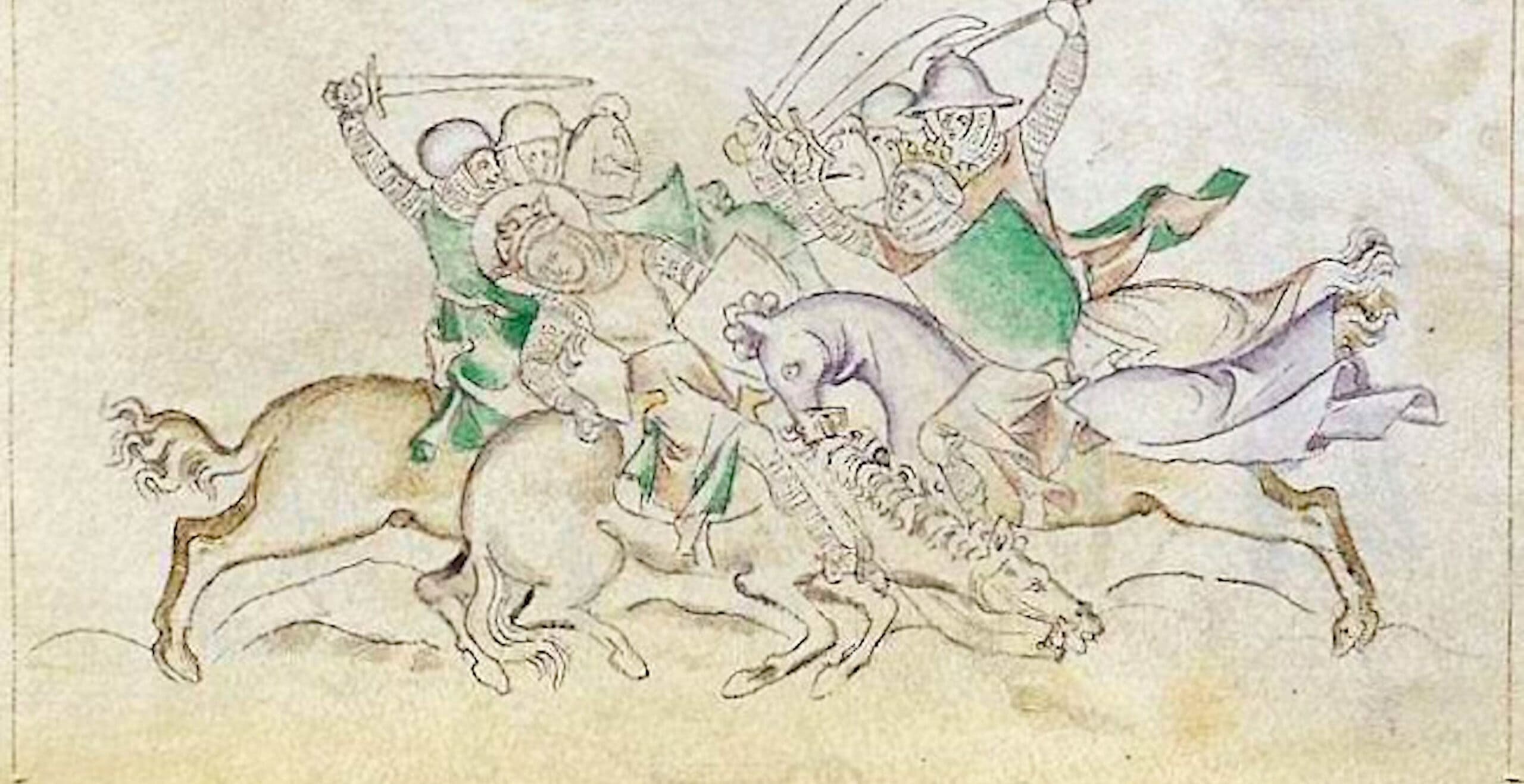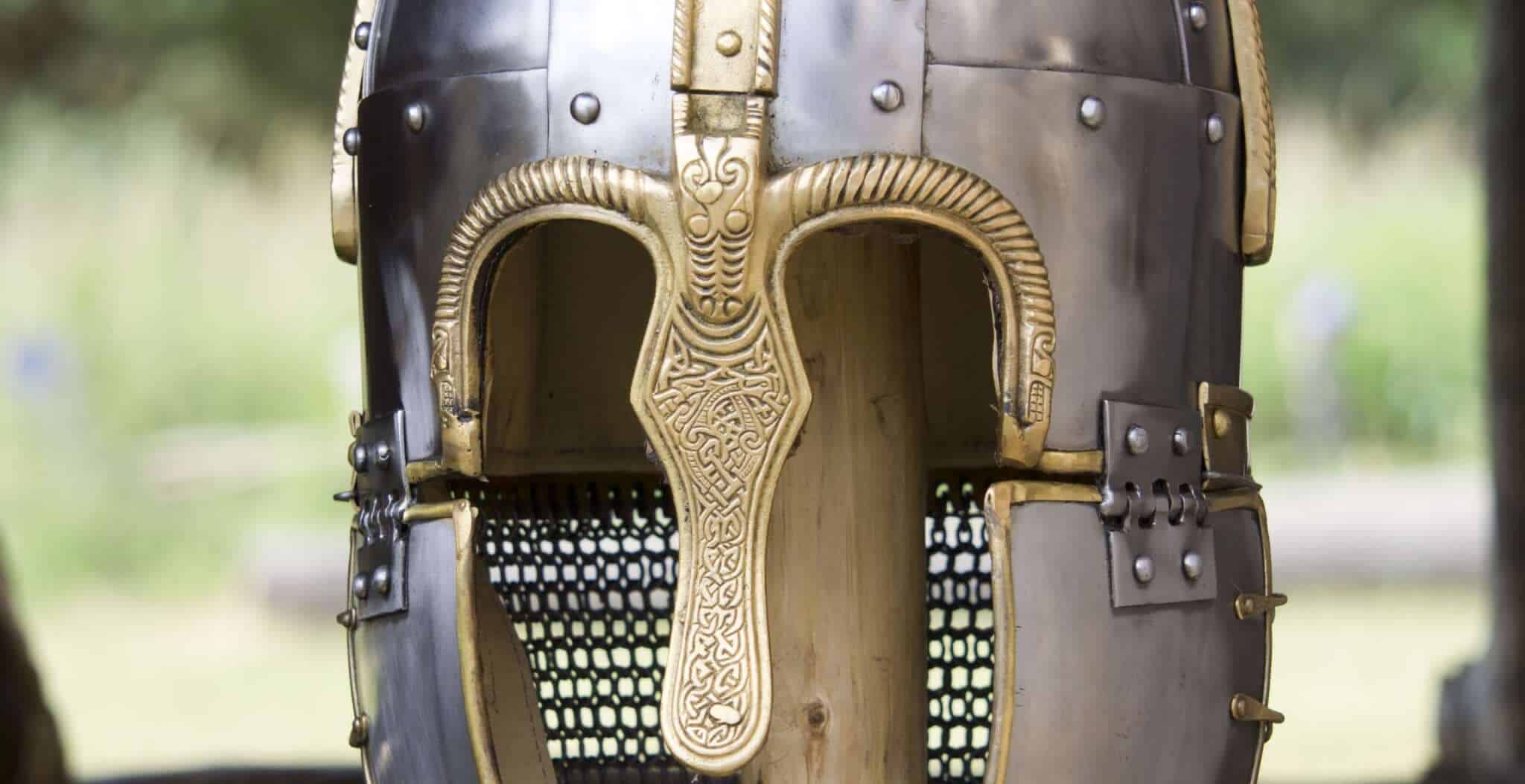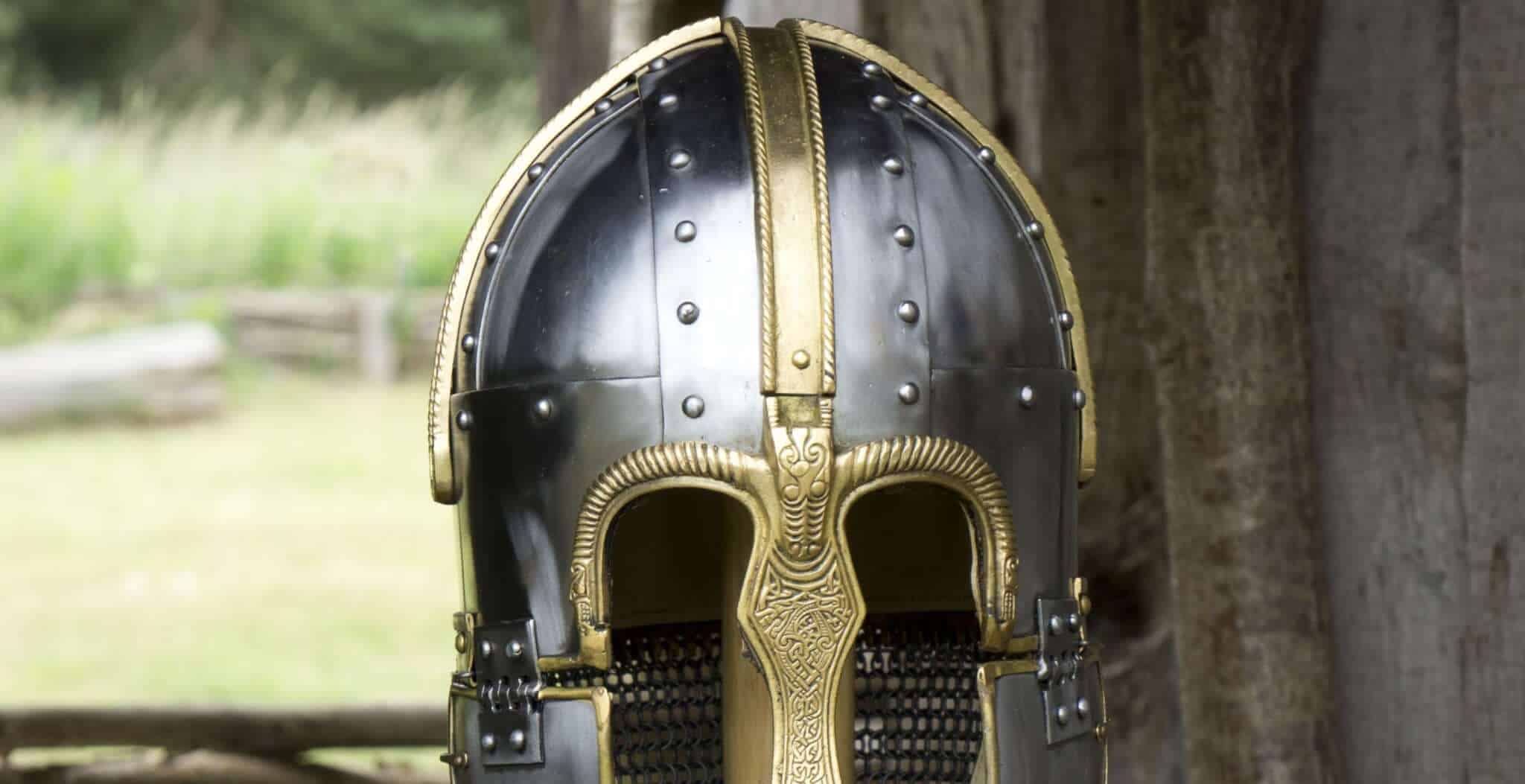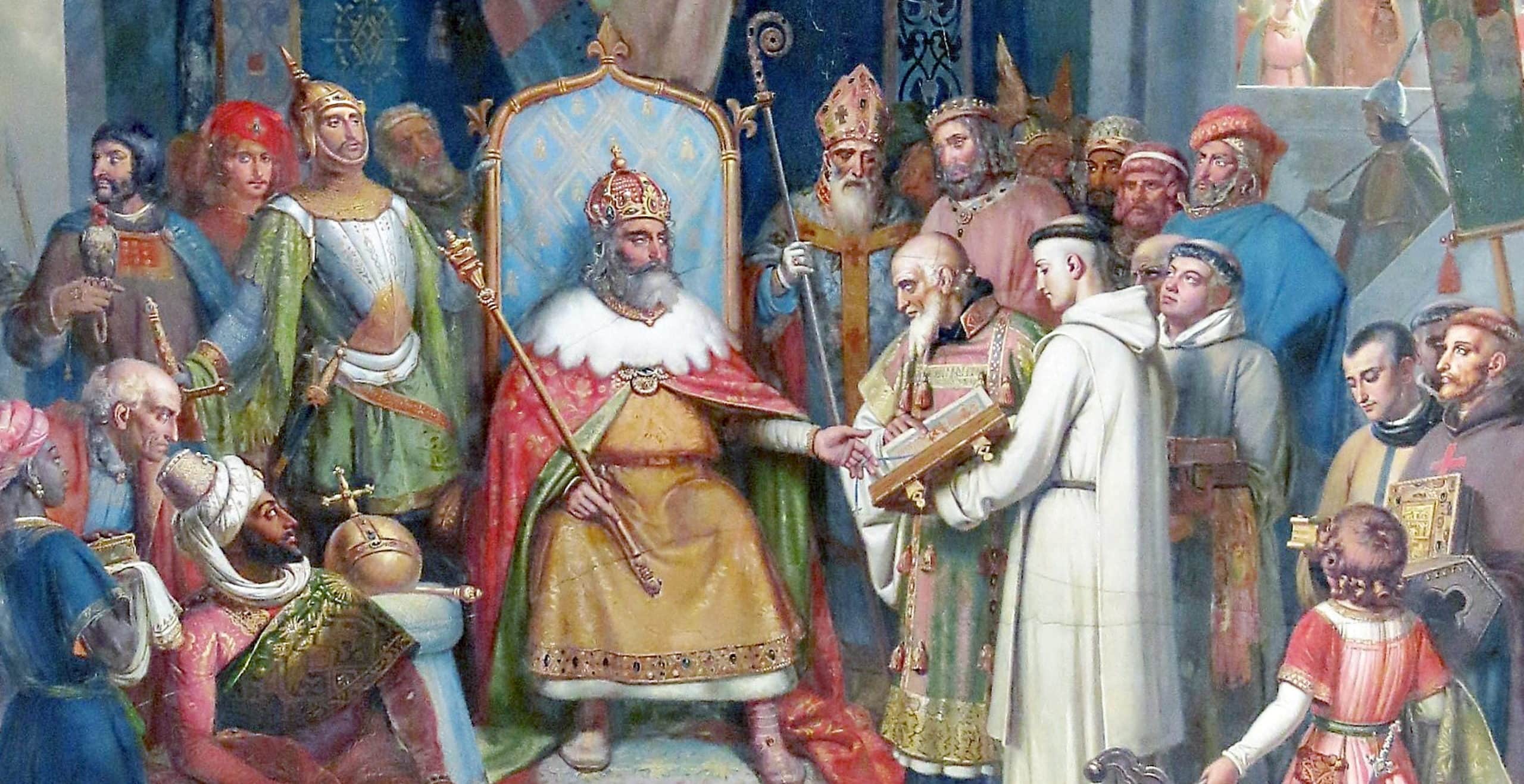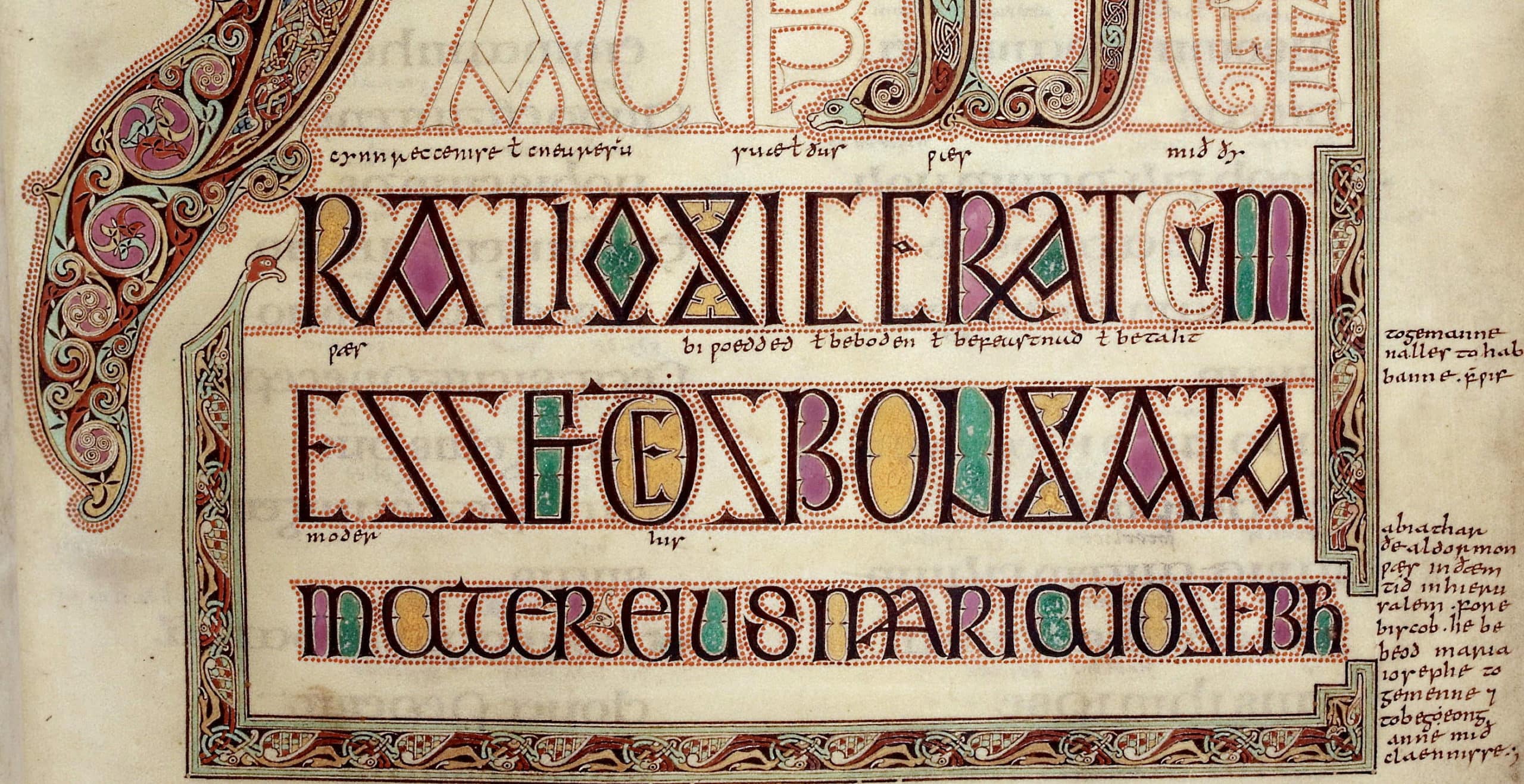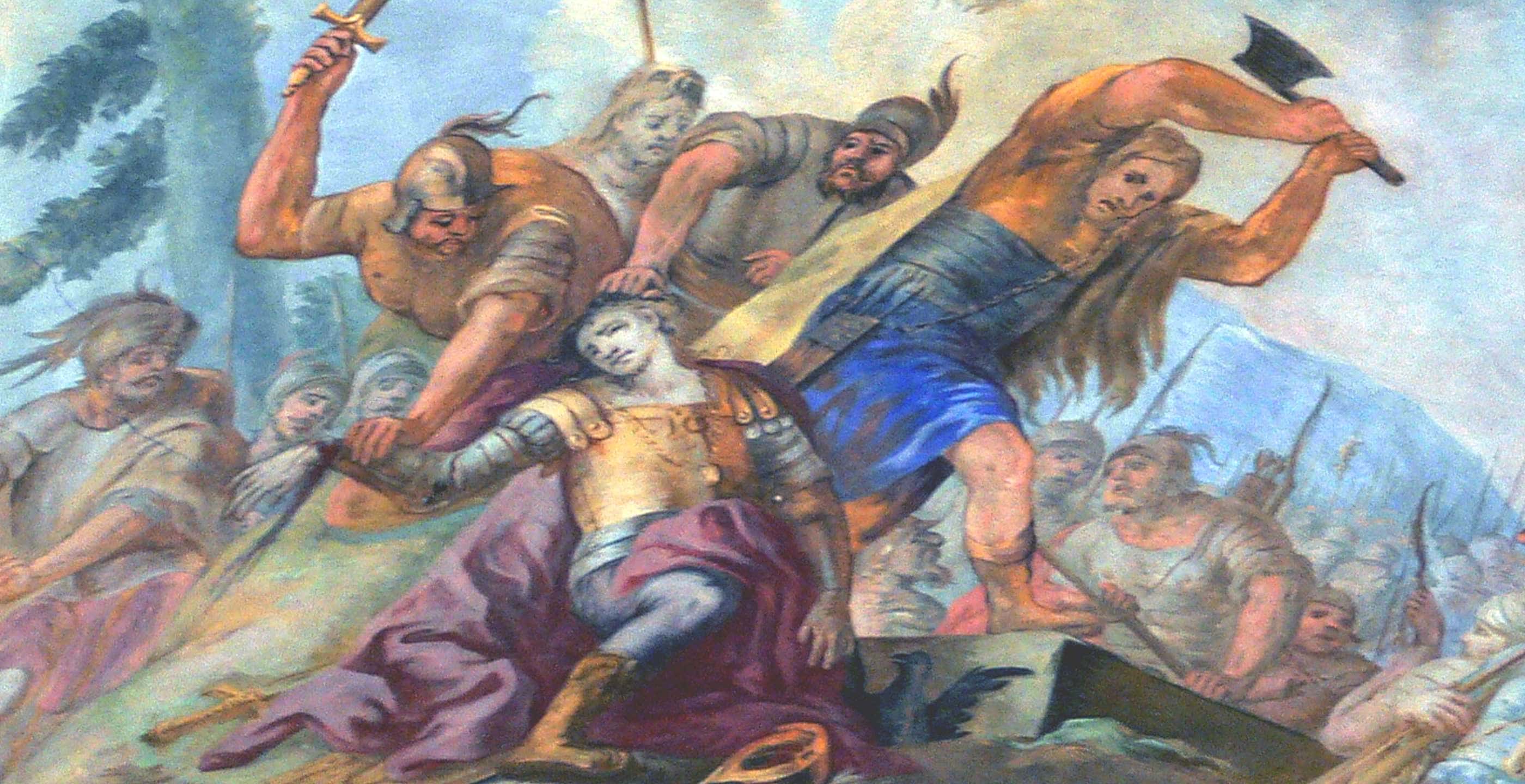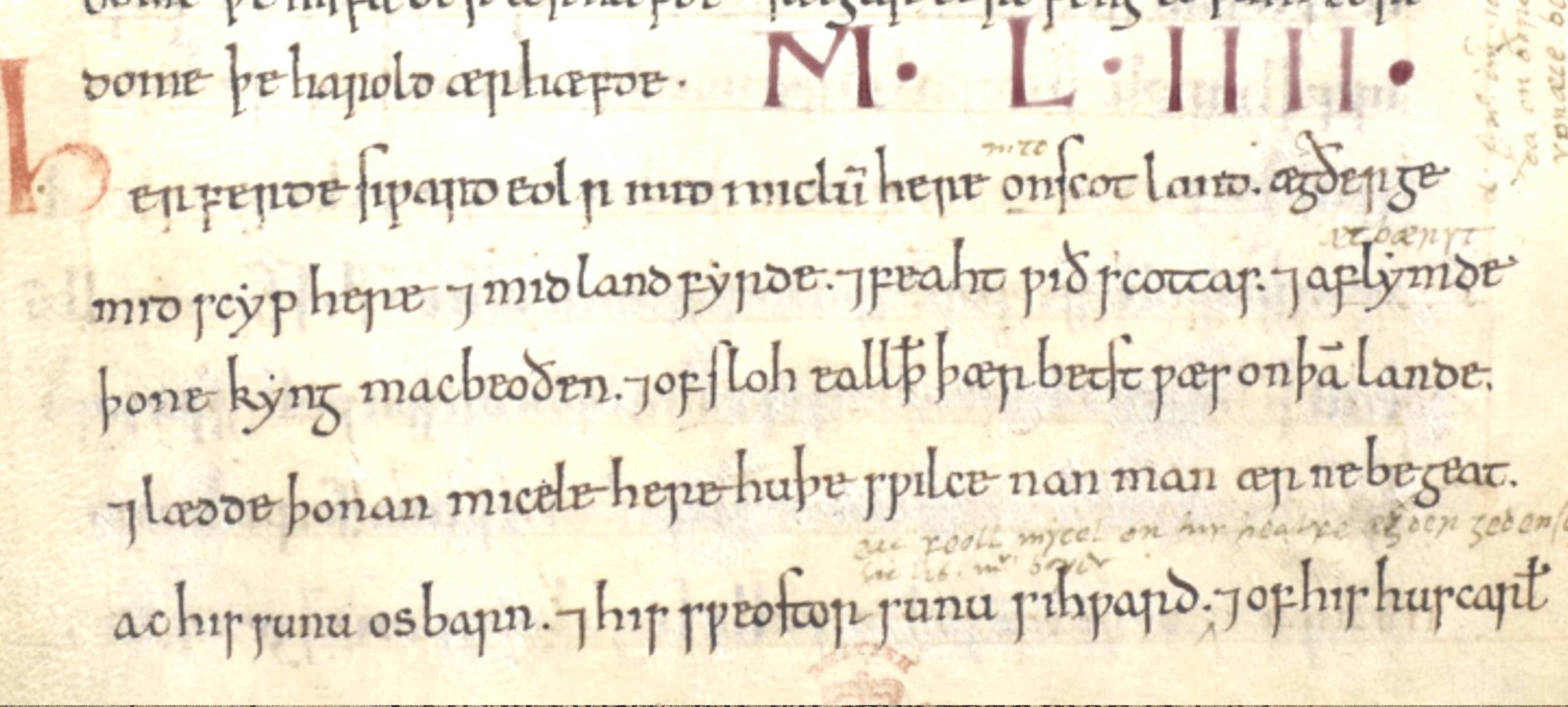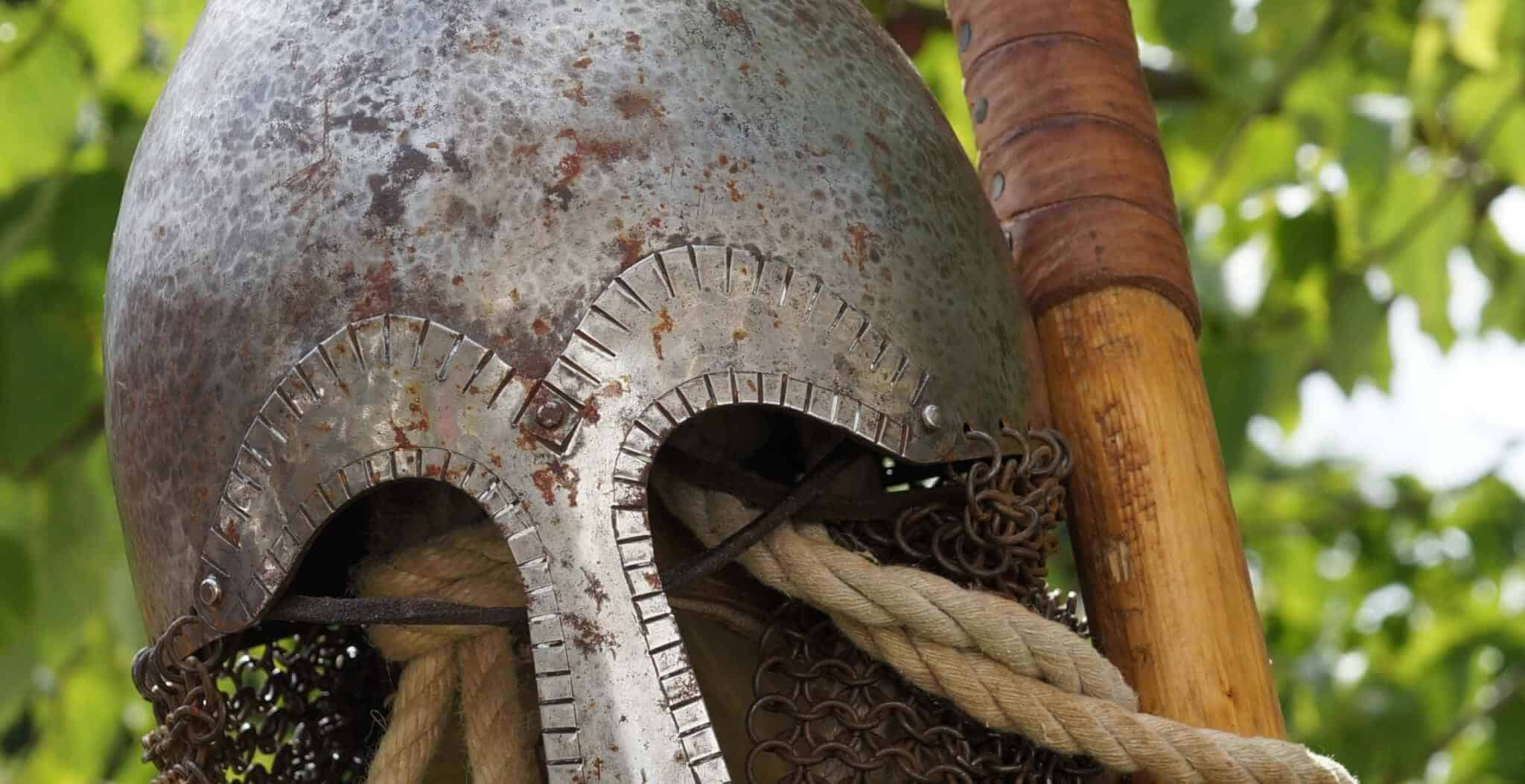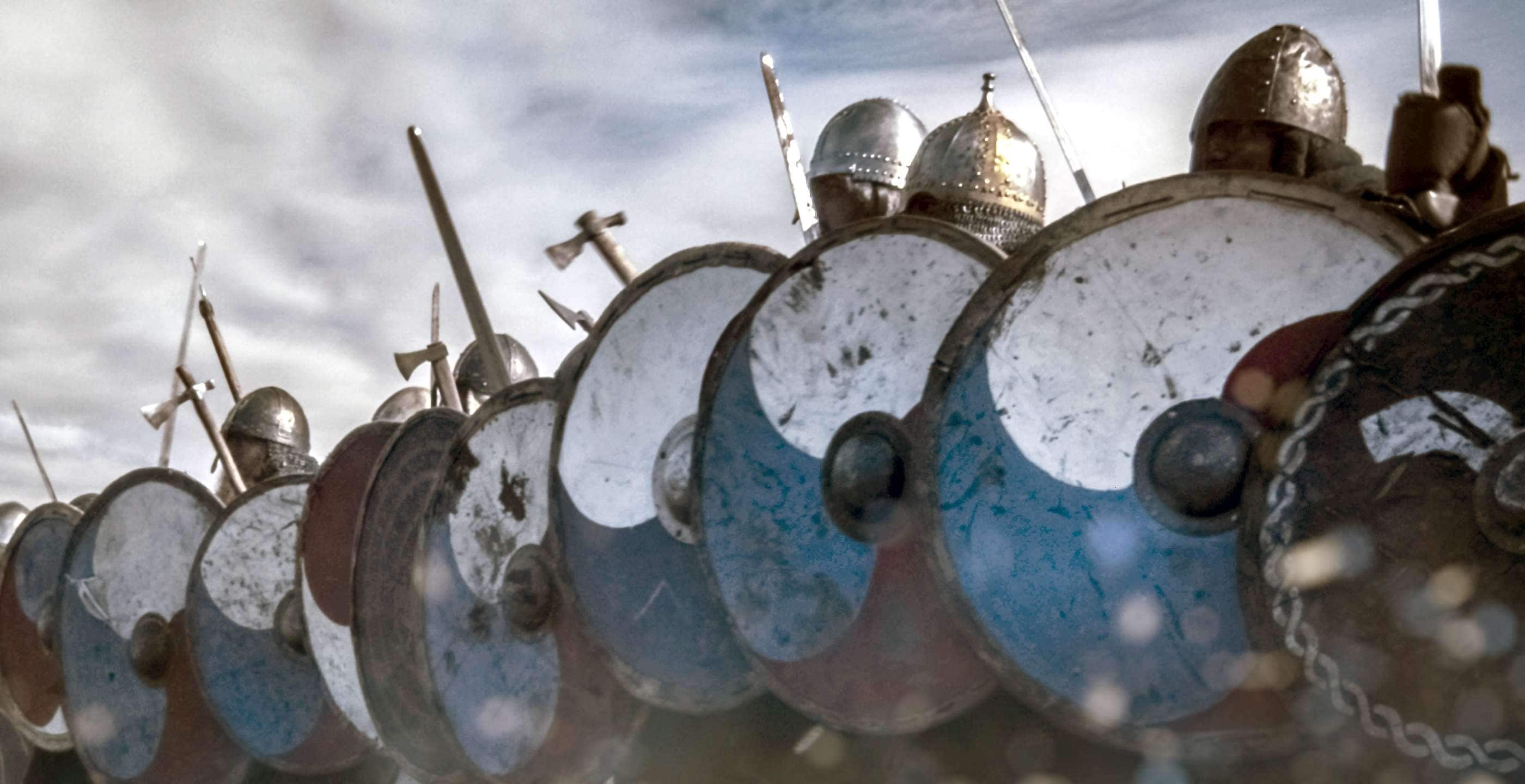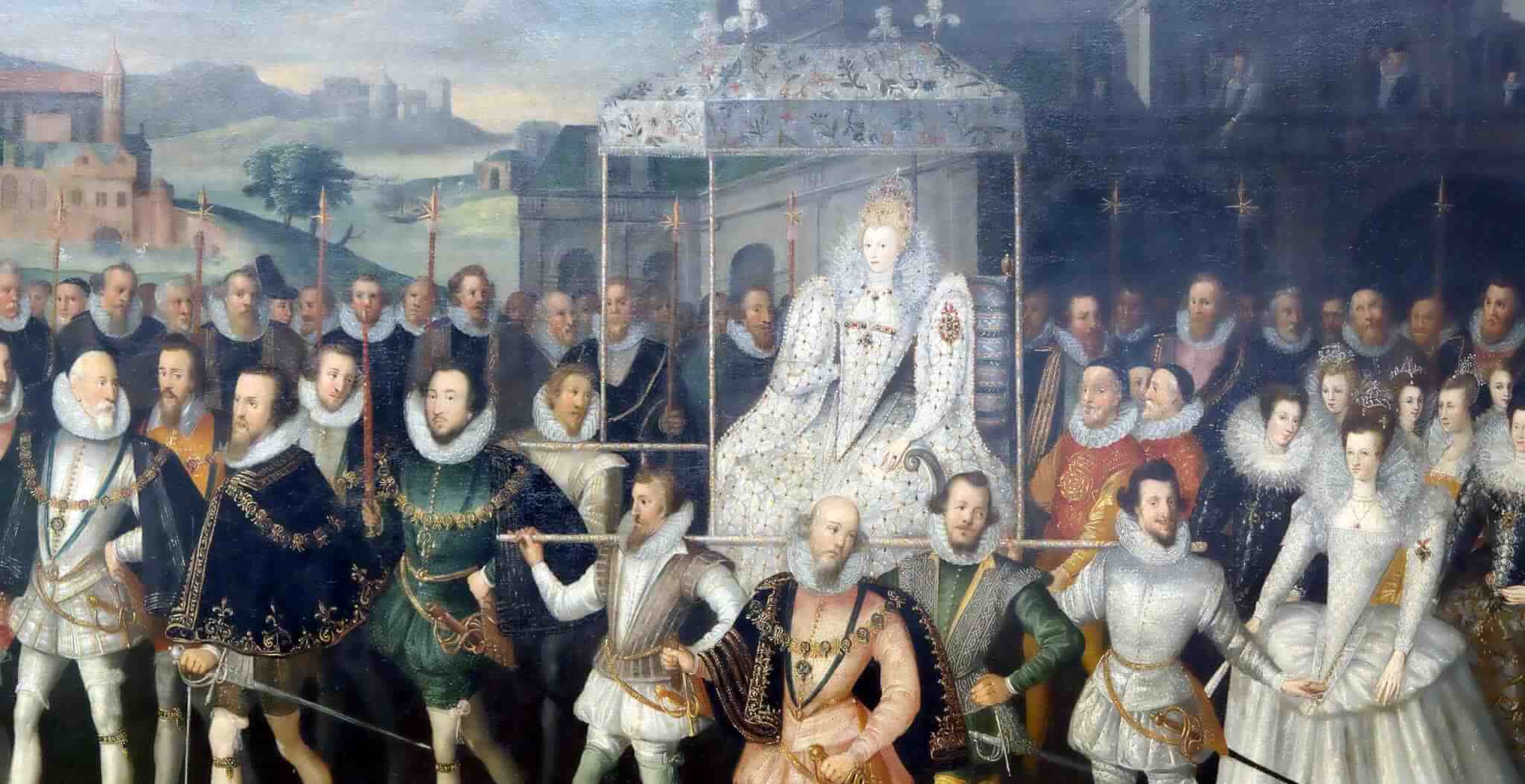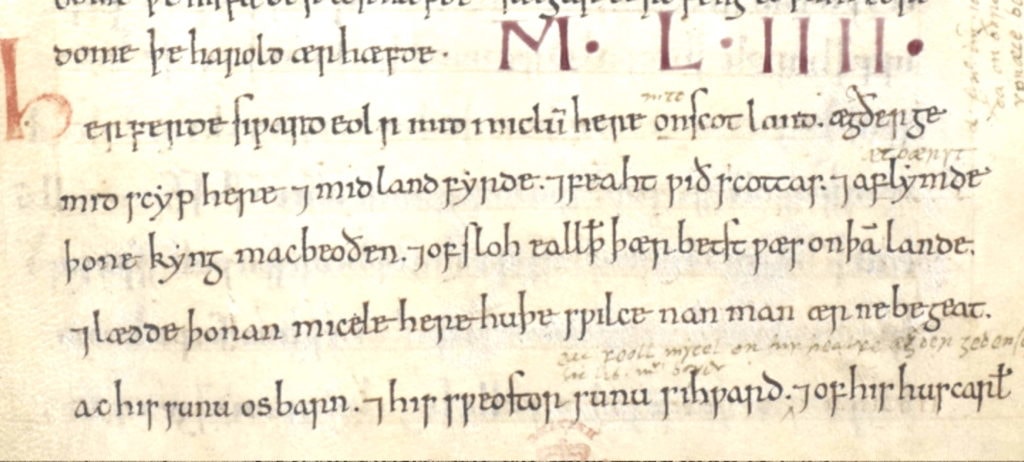Northumbria was one of the great seven Anglo-Saxon kingdoms of England, alongside East Anglia (East Angles), Essex (East Saxons), Kent, Mercia, Sussex (South Saxons) and Wessex (West Saxons).
Northumbria went through rapid expansion throughout the 7th century to be one of the ‘big three’ kingdoms of England along with Mercia and Wessex. During this period its lands stretched coast to coast, from the Irish Sea to the west to the North Sea in the east, and from the Firth of Forth in modern day Scotland to the north to the River Humber in the south. Its very name Northumbria derives from the land north of the Humber.
The Kingdom of Northumbia was created when the two smaller Anglo-Saxon states of Bernicia and Deira were united by King Aethelfrith, ruler of Bernicia (593-616), who after marrying the king’s daughter, gained control of Deira around 604. After Aethelfrith was defeated and killed in battle in 616 by the king of East Anglia, Northumbria was again divided. Aethelfrith’s sons Aenfrith, Oswald and Oswiu fled north into exile in present-day Scotland.
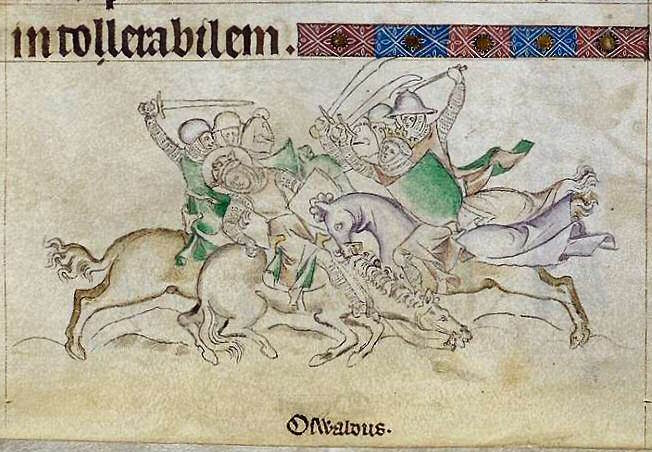
OSWIU (also spelt Oswy and Oswig) c. 654 – c. 670
Oswiu first became King of Bernia in 642 following the death of his brother Oswald, who was killed in a battle with Penda, king of Mercia. In 655 at the Battle of the Winwaed, Oswiu sought revenge when his forces killed Penda, establishing him as one of the most powerful rulers in Britain.
A devout Christian, Oswiu founded a number of monasteries, including Gilling Abbey and Whitby Abbey in order to spread the faith. Although he was raised in the Irish Celtic Christian tradition, Oswiu presided over the Synod of Whitby, where clerics debated the merits of the Celtic and the Roman tradition practiced by the southern Anglo-Saxon kingdoms. It was decreed that Northumbia would follow the Roman practice and so the main centre of Christian learning was transferred from Lindisfarne to York. Upon his death he was succeeded by his son Ecgfrith. Oswiu is buried in Whitby Abbey.
Ecgfrith c. 670 – c. 685
At the Battle of Two Rivers in 671, Ecgfrith put down a rebellion by the Picts in what is now southern Scotland. His forces occupied Pictland for the next several years. Shortly after the battle his marriage to Æthelthryth, an East Anglian princess, appears to have broken down as she persuaded the king to allow her to become a nun.
In 674 and later in 679, Ecgfrith’s forces fought two Mercian armies and took control of large swathes of land around the River Trent. For reason unknown, in 684 he dispatched a raiding party to the Dublin area of Ireland, which returned with a large number of slaves and booty sacked from desecrated churches and monasteries. His actions were condemned by his own church.
In May 685, Ecgfrith once again headed north into Pictland with his Northumbrian army in an effort to reassert his authority there. In the ensuing Battle of Dun Nechtain, a feigned retreat by the Picts drew the Northumbrians into an ambush; Ecgfrith was killed, along with the greater part of his army. Northumbria would never regain their dominance in the north. Ecgfrith was buried on the sacred Isle of Iona.
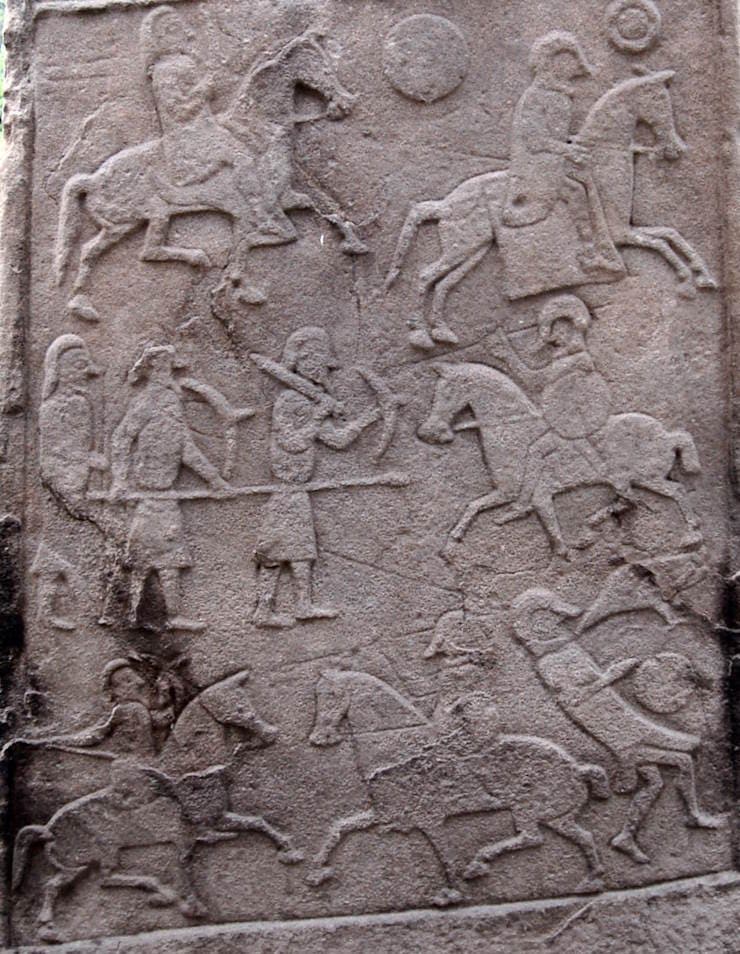
Aldfrith c. 685 – c. 704
Described as a man of great learning by the likes of the Venerable Bede and Alcuin, Aldfrith was the illegitimate half-brother of Ecgfrith and son of Oswiu. His reign was relatively peaceful, however Northumbria would never regain its dominance of central Britain lost in 679, or of northern Britain lost in 685. It would however, remain one of the most powerful kingdoms in the country. Aldfrith’s reign is considered to be the beginning of Northumbria’s Golden Age, a period during which such gems as the Lindisfarne Gospels were started.
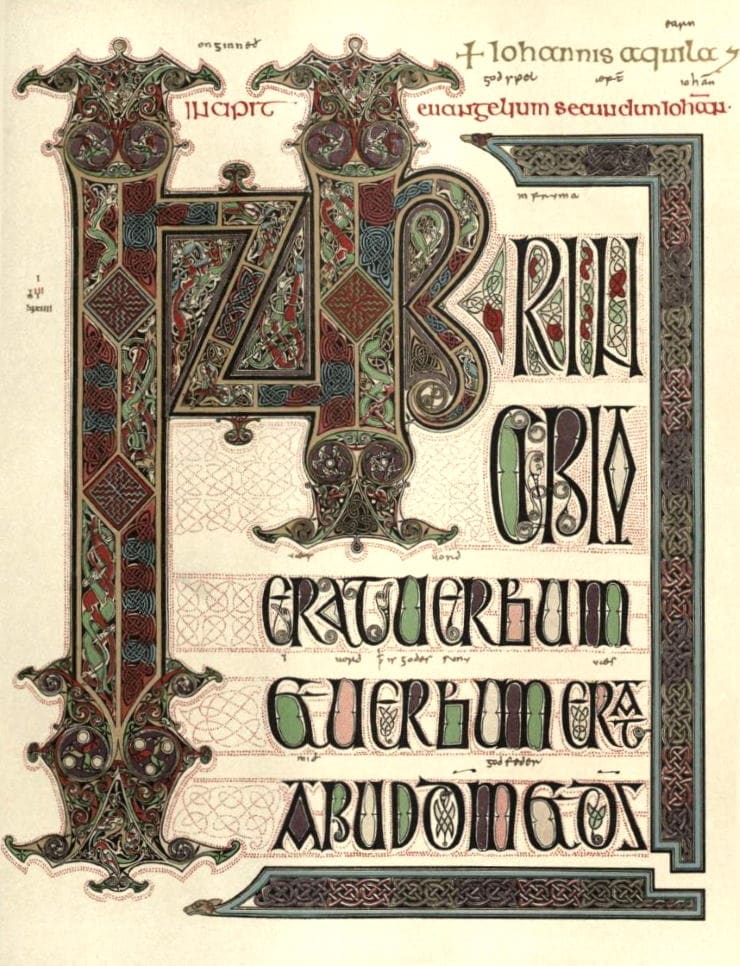
The Northumbrian coinage it thought to have emerged around this time. Silver coins known as sceattas were minted and replaced the impractical gold thrymsa as a means of exchange.
Aldfrith was married to Cuthburh, sister of King Ine of Wessex, thus forming an alliance between two of the most powerful kingdoms in the country. However, the Ango-Saxon Chronicle records that couple separated, with Cuthburh establishing an abbey at Wimborne Minister where she was abbess. At least two sons were born to Aldfrith, however it is not recorded who their mother was. Osred, born around 696, would succeed to the throne after a short civil war following Aldfrith’s death.
Eadwulf I c. 704 – c. 705
As Osred was a child when his father died in December 704, it is assumed that Eadwulf I usurped the throne as he doesn’t appear to have any relationship to the ruling royal dynasty. Following a short civil war ending in a siege of Bamburgh, Osred was restored as child-king of Northumbria in the early months of 705.
It appears that Eadwulf I was exiled to Ireland as his death is reported by the Annals of Ulster in 717. Eadwulf I great-grandson Eadwulf and Eardwulf son Eanred will emerge a little later as kings of Northumbria.
Osred I c. 705 – c.716
Inheriting the throne at the age of eight or nine, the issue of government fell to the powerful Bishop Wilfrid who also assumed the role of stepfather, adopting Osred as his son. The power behind the throne seems to have fallen to the ealdorman Berhtfrith, who in 711 resoundingly defeated the Picts in southern Scotland. The reign of Osred is otherwise unremarkable politically.
Aged around 19 or 20, Osred appears to have met his end, possibly in battle. The Anglo-Saxon Chronicle records that he was killed “on the southern border”, with no clue as to what border!
Coenred c. 716 – c. 718
Like many other kings of Northumbia, little is known about Coenred other than that he descended from the royal line of Bernicia. Again, the manner of his death is unclear. The Annals of Ulster records the death of the son of Cuidine, king of the Saxons in 718, which possibly refers to Coenred.
Osric c. 718 – c. 729
Although he was king for eleven years little is known about Osric. The only mention of him is by the Venerable Bede who notes that comets were seen at his death, a sure sign of an ill omen.
Shortly before his death in 729, Osric nominated Ceolwulf as his successor.
Ceolwulf c. 729 – c. 737
Ceolwulf was the brother of King Coenred (c. 716 – c. 718), who had seized the Northumbrian throne in 716. A man of great piety, he relied heavily on advice from the Venerable Bede, who expressed some reservations about his ability to rule effectively, perhaps with him being more suited to religious matters rather than affairs of state. Bede dedicated his Historia Ecclesiastica Gentis Anglorum (History of the English Church) to Ceolwulf in 731, describing him as the “most glorious king”.
He was deposed for a short time around 732, but quickly retook the throne.
Obviously a very clever king, he bestowed many gifts on the monastery at Lindisfarne and perhaps more importantly, obtained a special dispensation for the monks which allowed them to drink beer and wine, rather than milk and water. Shortly after this he abdicated in favour of his first cousin Eadberht and promptly retired to the alcoholic joys of Lindisfarne.
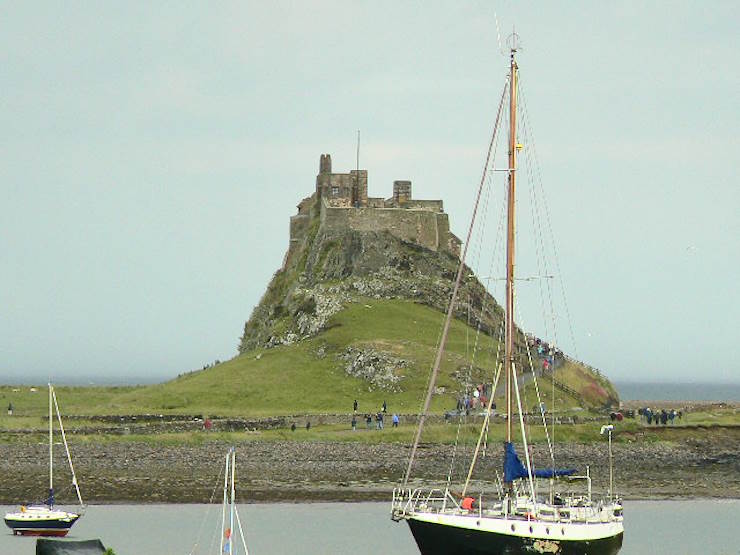
Eadberht c. 737 – c. 758
The brother of the first archbishop of York, Eadberht reigned over a period of economic and religious prosperity in Northumbria. He invaded the territory of the Picts and the British of Strathclyde, capturing the town of Dumbarton in 756.
Eadberht abdicated in 758, entering the monastery attached to the cathedral of York: his son Oswulf succeeded him. Following his death in 768, Eadberht was buried in the porch of the cathedral.
Oswulf c. 758 – c. 759
Although his father had enjoyed a relatively long reign, Oswulf did not hold the throne for long. Obviously not a popular king, he was apparently murdered by either his servants or bodyguards, on 24 July 759.
Æthelwald Moll c. 759 – c. 765
Not a direct descendant of either the Bernicia or Deira royal lines, little is known about Æthelwald’s ancestry. What is known is that Æthelwald seized the throne of Northumbria after the murder of Oswulf. It is unclear whether Æthelwald was involved with the regicide.
Æthelwald’s marriage to Æthelthryth is recorded in 762. The union produced at least one son Æthelred, who we will come to back to a little later.
During his time on the throne Æthelwald defeated at least one rebellion.
In October 765, a Witenagemot of Northumbrian nobles deposed Æthelwald, after which he became a monk. It is not clear whether he had much choice in the matter. He was succeeded as king by Eadberht’s (c. 737 – c. 758) son-in-law Alhred.

Alhred c. 765 – c. 774
Little is known about Alhred aka Alchred, other than he married Osgifu and they had two sons Osred and Alhmund. Osred is yet another name we will be coming back to later.
The Anglo-Saxon Chronicle records the bare facts that he became king and was then deposed and exiled in 774. Other sources claim he fled to the kingdom of the Picts, where he was received by King Ciniod.
Alhred was succeeded by Æthelred, son of King Æthelwald Moll (c. 759 – c. 765).
Æthelred I c. 774 – c. 796 (with interruptions)
It is possible that Æthelred was still a child when he became king. In 778, he was deposed as king and throne passed on to Ælfwald, grandson of King Eadberht (c. 737 – c. 758).
A tumultuous time for the rulers of Northumbria, Æthelred lived in exile during the reign of Ælfwald and his successor Osred II.
Around 789, Osred II was deposed and exiled and Æthelred was restored to the throne. In 792, Osred attempted to regain the throne, but was defeated, captured and killed. Just days later Æthelred married Ælfflæd the daughter of King Offa of Mercia at Catterick.
Æthelred was murdered at Corbridge, just a few miles south of Hadrian’s Wall, by a group of conspiring nobles in April 796.
Æthelred’s former adviser Osbald, became king, but within 27 days he abdicated.
Ælfwald I c. 779 – c. 788
Ælfwald is thought to have been the son of King Oswulf (c. 758 – c. 759). He became king after Æthelred was deposed in 778.
He was murdered, probably at Chesters, an ancient Roman fort on Hadrian’s Wall, by ealdorman Sicga in September 788. He was buried at Hexham Abbey.
Ælfwald was succeeded by his first cousin Osred, son of King Alhred (c. 765 – c. 774) and Osgifu.
Osred II c. 788 – c.790
Osred was king for just a year before he was forcibly deposed in favour of Æthelred I and is thought to have been exiled to the Isle of Man. He attempted to return in 792 but was abandoned by his soldiers and put to death on the orders of King Æthelred I.
Osbald c. 796
As mentioned above, Oswald had previously been an advisor to King Æthelred I.
A friend of Bishop Alcuin of York, the bishop had sent him many letters of advice suggesting that Oswald should reign in his extravagant lifestyle. In his letters, the bishop criticised Osbald’s greedy behaviour, luxurious dress and his pagan hair style. Osbald obviously ignored the Alcuin’s good advice as his reign lasted just 27 days before he was ousted.
Osbald first went into exile on Lindisfarne before sailing on into Pictland, where he was given refuge by King Caustantin. He died in 799 and was buried in an unmarked grave in York Minster.
By this time, Northumbria was descending into a period of anarchy.
Eardwulf c. 796 – c. 806
During the last years of the eighth century, Northumbria was the scene of a dynastic struggle with several noble families fighting and murdering to gain the top spot. It appears that Eardwulf somehow emerged from all the in-fighting to assume the throne.
Apparently married before he was king, Bishop Alcuin of York reproached Eardwulf for abandoning his wife for a mistress shortly after his coronation.
In 798, Eardwulf was victorious at the Batlle of Billington Moor, near Walley in modern day Lancashire, were he defeated, perhaps the same group of conspiring nobles that had previously murdered King Æthelred I (c. 774 – c. 796).
Symeon of Durham, an eleventh and twelfth century monk and chronicler, wrote that in 801: Eardwulf, king of the Northumbrians, led an army against Coenwulf, king of Mercians, because he had given asylum to his enemies.
Eardwulf was deposed in 806, the details of which are unclear.
Ælfwald II c. 806 – c. 808 & c. 808 – c. 810
Ælfwald reigned as king for two years following the deposition of Eardwulf in 806. It then appears that Eardwulf was reinstated for a brief period before again being deposed with Ælfwald once again assuming the throne. Actual written records of his reign have not survived, however a limited number of coins minted in York exist.
Eanred c. 810 – c. 840
Eanred may have been the son of King Eardwulf c. 796 – c. 806, other than that little is know about his reign. The Anglo-Saxon Chronicle records that in 829, Egbert of Wessex led an army against the Northumbrians as far as Dore, where they met him and offered terms of obedience and subjection, on the acceptance of which they returned home. Dore is a large village near Sheffield in South Yorkshire.
Æthelred II c. 840 – c. 848
Once again, few records detailing the reign of Æthelred have not survived the years. Even the exact years of his reign are uncertain. Possibly the son of Eanred (c. 810 – c. 840), it looks likely that Æthelred was deposed around 844 by a noble called Rædwulf, however was restored to power later that year when Rædwulf was killed fighting against the Vikings. It is believed that Æthelred was murdered around 848, there are no clues as to why, where, or by whom.
Osberht c. 848 – c. 862
Yet another turbulent time in Northumbrian history, Osberht apparently became king after Æthelred II was murdered sometime around 848. Little is known of Osberht’s reign other than that Symeon of Durham writes that Ethelred the son of Eanred reigned nine years. When he was slain Osbryht held the kingdom for thirteen years.
Osberht was replaced as king by Ælla sometime around 862.
Ælla (also spelt Ælle and Aelle) c. 862 – c. 867
Possibly the brother of Osberht, Ælla is one of the few Northumbrian kings mentioned in the Norse sagas. They record that Ælla captured the legendary Swedish-Danish Viking king Ragnar Lodbrok and put him to death in a pit of snakes. They go on to say that the Great Heathen Army, composed mainly of Danish, Norwegian and Frisian Vikings, invaded Northumbria in mid-866 in retaliation for Ragnar’s execution, capturing the city of York.
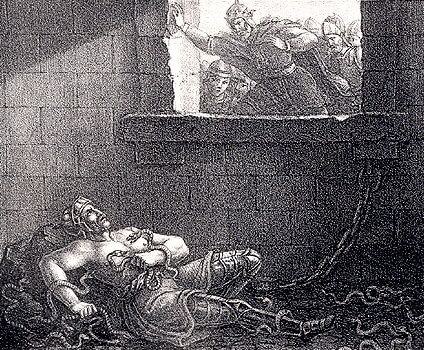
Following the invasion, it is said that the Osberht and Ælla, along with other Northumbrian nobles, united their forces and marched on York. One source records that in the ensuing battle that followed that the surrounded Northumbrians “fought upon each side with much ferocity” until both Osberht and Ælla were killed. The surviving Northumbrians “made peace with the Danes”.
The great Anglo-Saxon kingdom of Northumbia had now fallen under Viking rule. And although the Vikings appointed a puppet king of Northumbria, named Ecgbert, they effectively ruled over the area for the next ninety years. Anglo-Saxon control would only return when the whole of England would succumb to the rule of one man, Aethelstan, the first king of England.
Published: 1st November 2024
